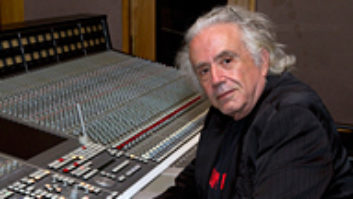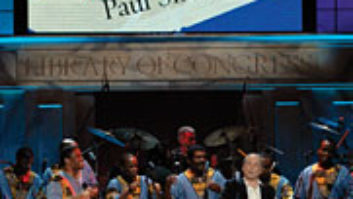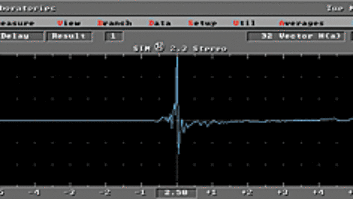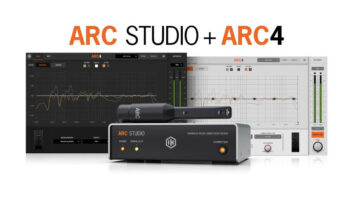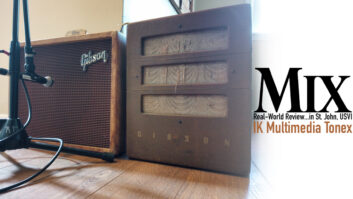
Tucked away in the Hollywood Hills in a cozy 1920s-era house, thebusy studios of Mi Casa Multimedia Inc. are dedicated to the art ofremixing feature films for the home theater surround experience. Thebrainchild of producer/engineer/synthesist Robert Margouleff andmusician/engineer Brant Biles, Mi Casa opened in 1997. Since then, ithas evolved into a three-studio complex with an enviable,genre-crossing track record that includes such notable pictures asAustin Powers: Goldmember, Dirty Dancing, Se7en, About Schmidt, DownFrom the Mountain, Elf and both The Lord of the Rings: TheFellowship of the Ring and The Two Towers.
Currently in the process of restoring six original ’60s and ’70sJames Bond films for MGM, along with numerous other projects, MiCasa is equipped with four Sony DMX-R100 consoles and a sophisticatedrecording, editing and restoration system: a hybrid of SADiE, Pro Toolsand Sony technology.
The Grammy-winning Margouleff, known for the four records that hemade with Stevie Wonder (including the classic Innervisions),and for his work with artists as disparate as Devo, the Doobie Brothersand Norman Brown, is your basic Renaissance type. His aesthetics arereflected in the painstaking restoration and retrofitting of Mi Casa’sMediterranean-style house and in the way its ambience blends withacoustics to create three discrete and distinctly contemporary“living room” listening experiences.
“Home theater is a very different animal than the movietheater,” he notes. “What we wanted to achieve here wasthree fairly typical, but different, listening environments. Each roomhas its own set of speaker systems, and we make sure that the endresult works in all three rooms.”
With the enormous success of DVD-Video, Mi Casa’s remixing for hometheater premise was a case of the right idea at the right time.Margouleff, however, has been a surround enthusiast since the mid-’70s.With the advent of 5.1, he and Biles were quick to see the potentialfor music mixing and early on created a fruitful collaboration withDTS. But, with 5.1 music still only nascent, they began looking forother venues. “I started listening to DVDs, and they all soundedhorrendous,” Margouleff recalls. “They were directtransfers trying to imitate the theater experience. I knew what thecapabilities were, so we started knocking on the doors of moviecompanies. We were fortunate to develop a relationship with New LineCinema, an unusual company that wants every disc that comes out torepresent the finest solution possible. It wasn’t long beforedirectors, realizing the difference we could make, started gettinginvolved, and the other companies quickly followed.”
“For current films, like Elf, we remix basically fromstems,” explains Biles. “But even with stems, you’d besurprised at the amount of noise and dropouts that can occur in theoriginal material. When your monitors are six to 10 feet away from youat ear level, the whole environment is different, especially in thesurrounds. We take all of this into account. The result is not animitation of a movie house; it’s a different, much more detailedexperience.”
For Mi Casa’s restoration projects, the requisite tracking down oforiginal source material comes first, with supplemental sound designadded where needed. According to both Biles and Margouleff, SADiE’sCedar Tools and Retouch programs are invaluable to the restorationprocess. Recently, Mi Casa has expanded operations to encompass thefull spectrum of audio on its DVD projects, including remixing andfinishing in surround for deleted scenes, commentaries and menus.
Noted architect John Storyk designed Mi Casa’s studios, with inputby Vincent Van Haaff and room tuning by Bob Hodas; main constructionwas by carpenter/musician Tony Clearwater. Biles is responsible foroverall technical design, with the major portion of the wiring workdone by Paul Cox.
Studio A, the largest suite, features two “cascading”DMX-R100 desks with a Sony SIU 100 AES/MADI interface for a total of106 digital inputs and 48 analog inputs, along with a Genelec 1032Amonitoring system. Studios B and C have single R100s; B is equippedwith JBL LSR 28S monitors, and C with Meyer HM-1s.
“In Studio A, we’re running the SADiEs with 24 I/Os, Pro Toolswith 48 I/Os, the two DMX-R100 consoles and the SIU 100 all at the sametime,” Biles marvels. “Not to mention the TC Electronic6000s and Orion Junger mastering compression. The Z-Systems 64-by-64digital routers in all studios are really helpful, as well. It reallyis an incredible amount of power.”
“What we are doing here is truly the convergence of motionpictures, television and audiophile audio,” comments Margouleff.“The home theater platform is where all of them reside. Whatmakes Mi Casa different is that all of us are musicians. That gives usa different sensibility than people from most of the post houses. Andwe never take what we do for granted. We don’t ever want to sacrificequality for expediency. When people come to us, it’s because of theaudiophile level with which we treat the projects.”
Visit Mi Casa online at www.MiCasaMM.com.
Maureen Droney is Mix‘s Los Angeles editor.
